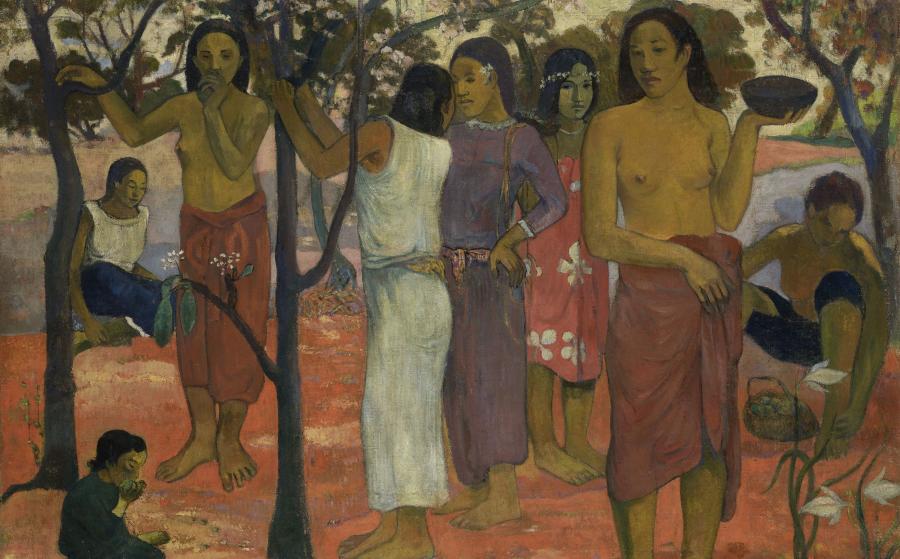Nave Nave Mahana
Information sur l’artiste
Paul Gauguin [Paris, 1848 - Atuona, Iles Marquises, 1903]

Nave Nave Mahana, 1896.
Image © Lyon MBA - Photo Alain Basset
This painting was made in 1896 by Paul Gauguin in Tahiti. Its title, Nave Nave Mahana, means “delicious days” in Tahitian.
A group of mysterious young women seem to be gathering fruit from the branches of plants. Their feet are solidly anchored on the red ground. Behind them, we can see a yellow sky. Their static postures and monumentality, the stylization of shapes, the rhythm of the elements of the frieze, and the palette of colors bring to mind representations from antiquity, known as “primitive”. In his work, Gauguin evoked an exotic and timeless inner vision from what he found around him, a vision found somewhere between poetic ideal and melancholy gravity, between delight and sadness. Frozen, distant, silent, with eyes cast down and solemn faces, these figures are perhaps a revealing indication of the artist’s isolation and ill health at the time of painting.
The painting became part of the collections of the Lyon Museum in 1913. It is the first work by Gauguin to be purchased by a French museum. At the time, this was a remarkable initiative. At the beginning of the 20th century, Gaugin’s style was still not accepted by the public, or even by connoisseurs. Today, this work is one of the masterpieces of the museum’s painting collection.
1896
Oil on canvas
H. 95; W. 130 cm
Acquired in 1913





